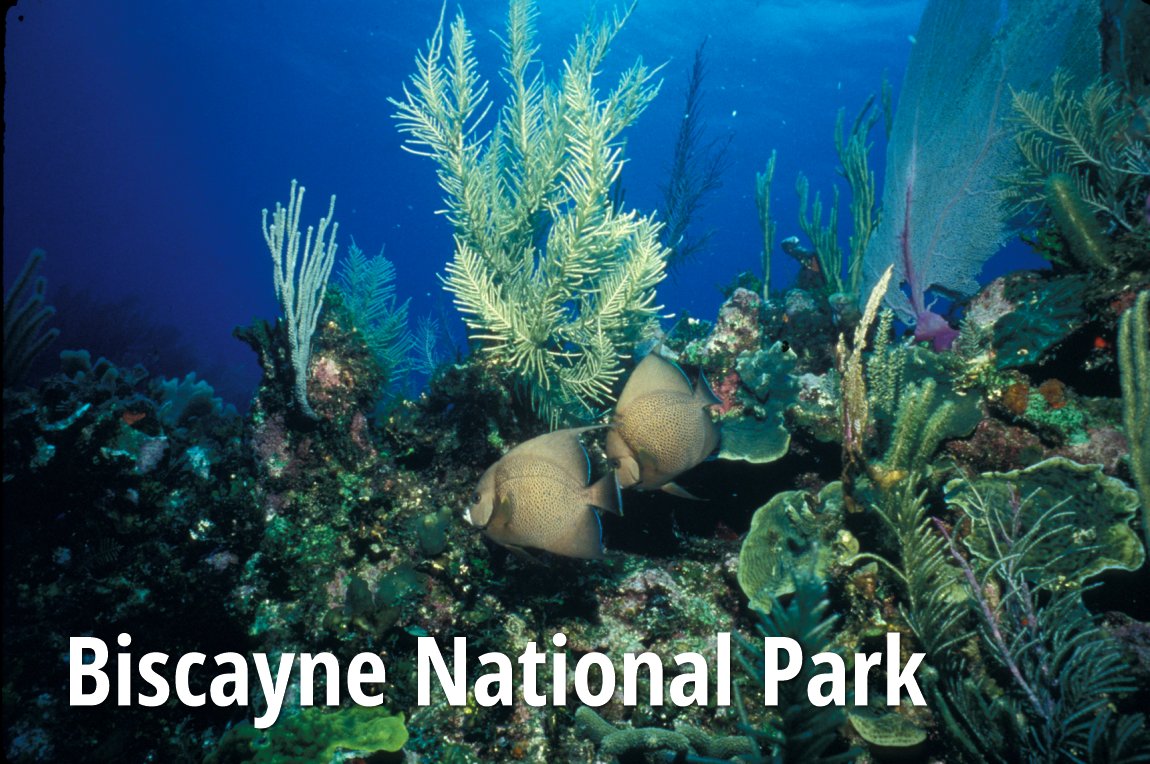 Marine life in Biscayne National Park
Marine life in Biscayne National Park https://commons.wikimedia.org/wiki/Category:Biscayne_National_Park#/media/File:Biscayne_National_Park_H-two_gray_angels_on_reef.jpg
https://commons.wikimedia.org/wiki/Category:Biscayne_National_Park#/media/File:Biscayne_National_Park_H-two_gray_angels_on_reef.jpg National Park Service Digital Image Archives
National Park Service Digital Image Archives
Biscayne National Park is a national park in southern Florida. Established as Biscayne National Monument on 18 October, 1968, and promoted to National Park on 28 June, 1980, it covers 207 sq miles (700 sq km). The park preserves Biscayne Bay, one of the top scuba diving spots in the United States. Ninety-five percent of Biscayne National Park is located in the sea. Also included in the national park is the shoreline of the bay which is covered by an extensive mangrove forest.
The park's largest island, Elliott Key, is regarded as the first of the true Florida Keys being formed from coral reef. The islands farther north in the park are transitional islands of coral and sand.
Scuba diving and snorkeling in the coral reef inside the bay are the main form of recreation in the park. Tourists can also take a glass-bottom boat tour of the bay, or rent kayaks to explore the bay and the islands of Florida Keys in it. The historic homes of Stiltsville is currently not open by casual visitors but may be viewed from afar from boats.
Going to Biscayne National Park
If you are coming from Miami, head south on the Florida Turnpike / Ronald Reagan Turnpike / Florida 821 Toll Road to Convoy Point, leaving it at Exit 6 (SW 137th Ave / Speedway Boulevard). Turn left and go south on SW137th Ave unti8l intersection with SW 328th Street (North Canal Drive). Turn left and continue east till end of the road for five miles, and you will see the park entrance on your left.List of National Parks in the United States
 Latest updates on Penang Travel Tips
Latest updates on Penang Travel Tips

Copyright © 2003-2025 Timothy Tye. All Rights Reserved.

 Go Back
Go Back